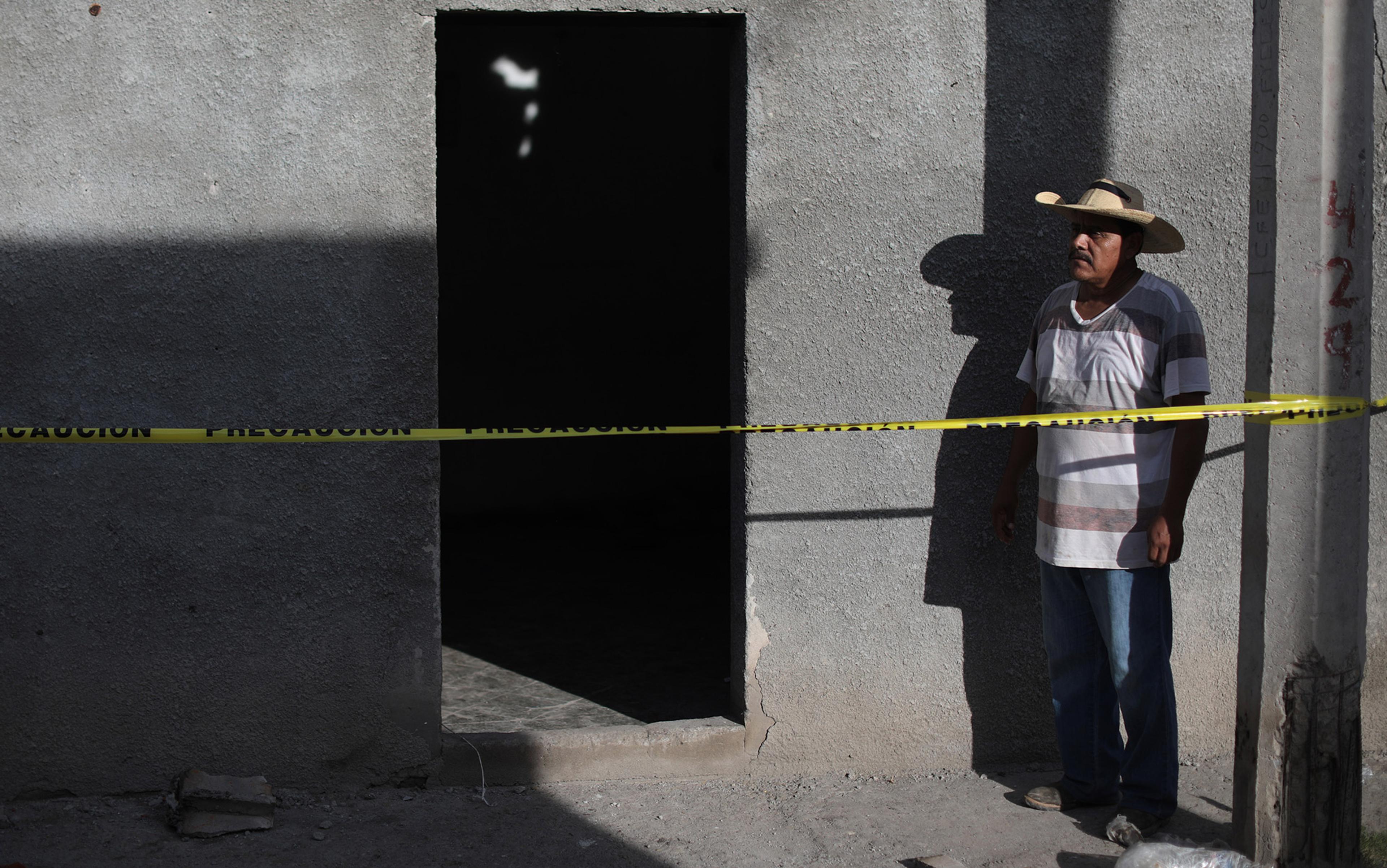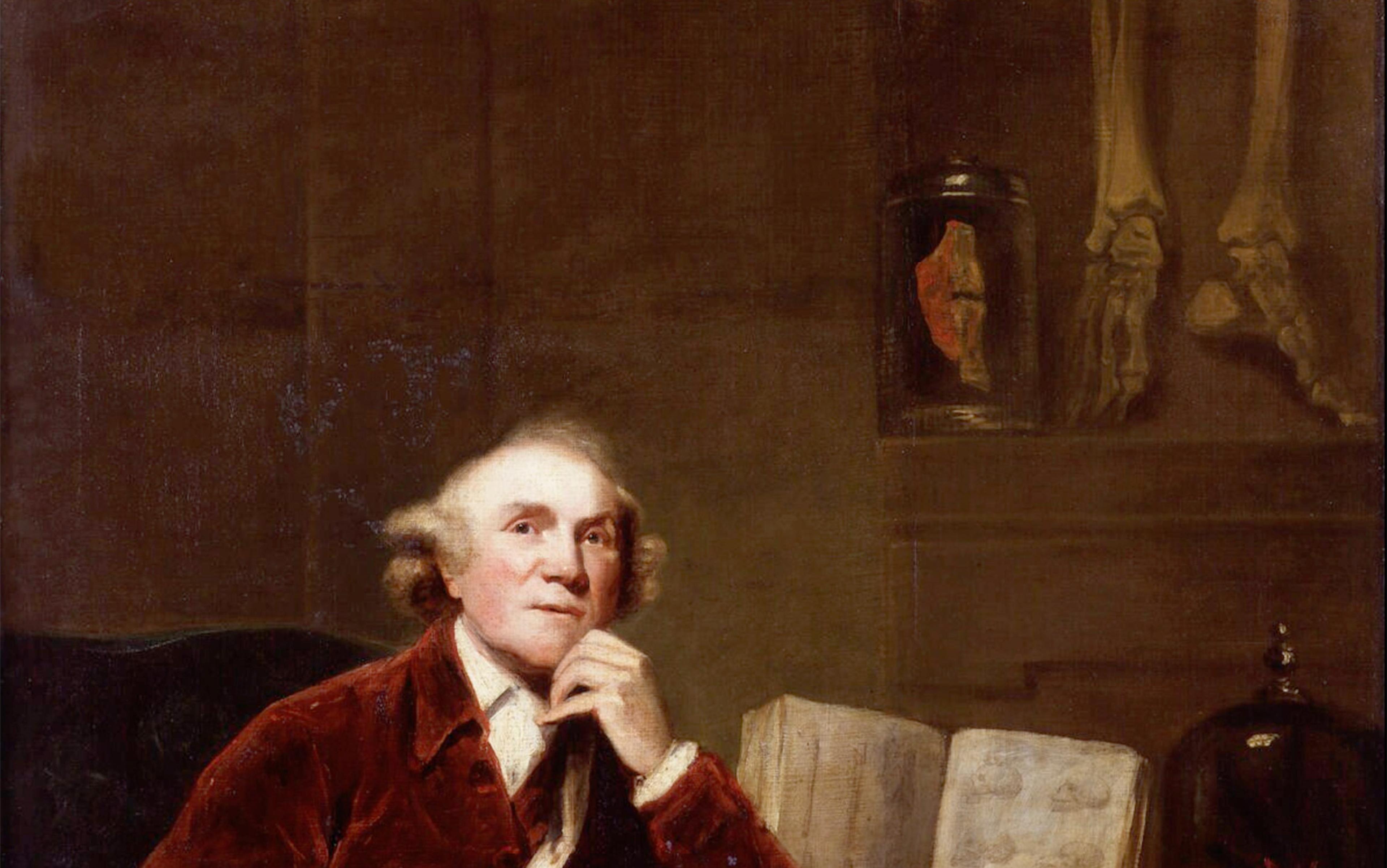I remember standing at the front of a biology classroom at the University of Southern California sometime in the 1990s and placing an acetate film on an overhead projector. The words cast onto the white screen read something like:
Species: a group of organisms that interbreed to produce fertile offspring.
More than a century earlier, Charles Darwin’s On the Origin of Species (1859) was published. Its central hypothesis held that, because populations contain variety, some members were born with characteristics, or adaptations, that made them more fit – better able to produce offspring. Others were less fit and they, along with their adaptations, were winnowed away as they added fewer and fewer offspring to future generations. This variation coupled with the winnowing was the fuel that drove changes in populations, eventually leading to populations that could no longer interbreed with each other and produce fertile offspring. Thus, new species evolved.
Darwin’s revolutionary idea was well summarised by the German biologist and artist Ernst Haeckel in the graphic form of a tree. Every one of its twig-tips symbolised a different species. The crook between two twigs represented an ancestral species that diverged into two (or more) modern ones. While many branches were pruned away, others grew ever longer, diverging into the future.
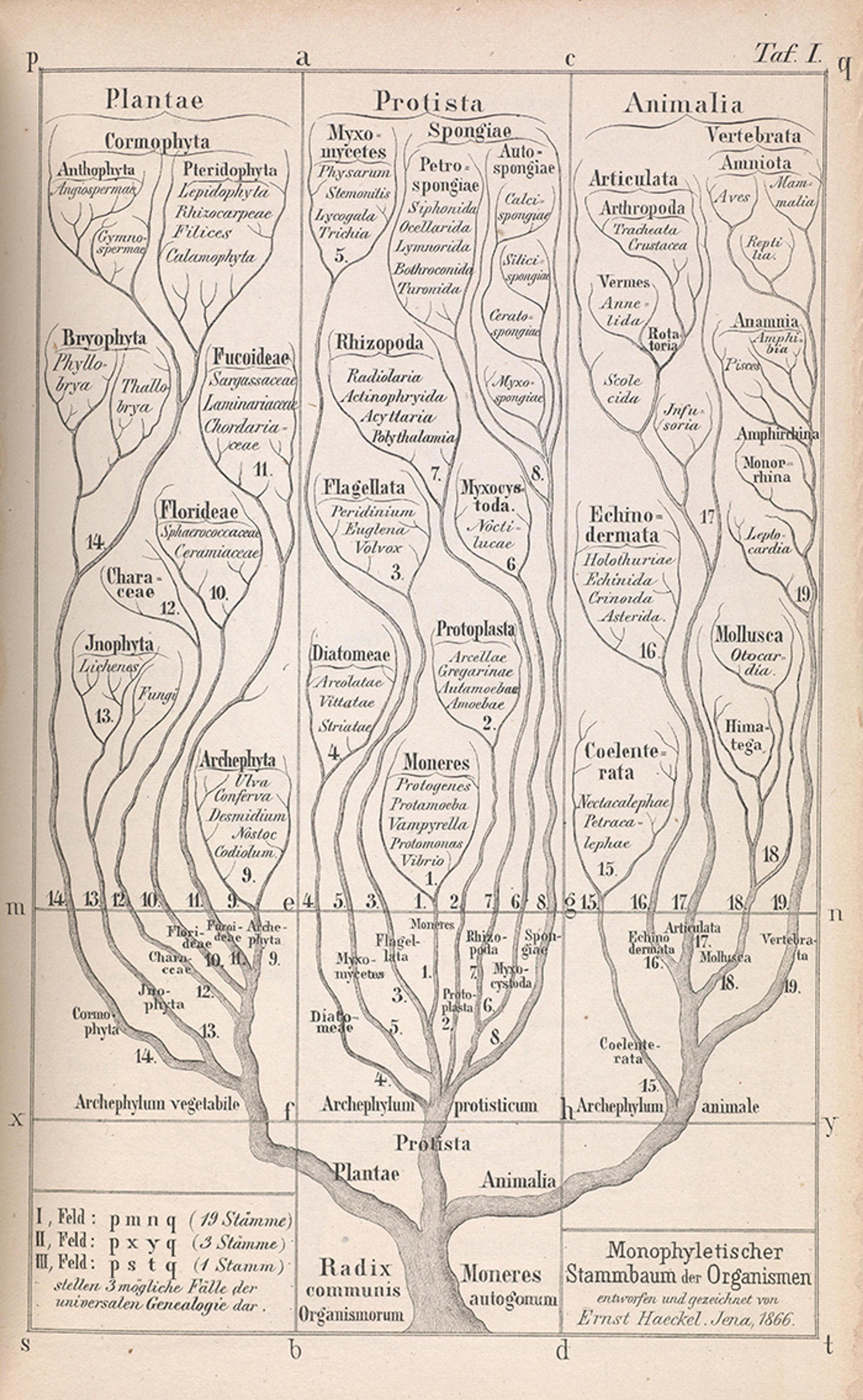
In that southern California classroom, I told my students that once a species diverged from its ancestor – when it became unable to interbreed and form fertile offspring – those branches were separate, forever isolated. But, even as I spoke the words, I knew something wasn’t exactly right.
I was studying phytoplankton at the time. Single-celled creatures such as phytoplankton reproduce by cell division, which makes the question of what’s an offspring tricky. When you clone yourself, which one is the ancestor?
Graduate students down the hall in a microbiology lab regularly used viruses to transfer genes from one species to another. And gene shuffling wasn’t just happening by manipulation. I’d heard seminars about how different species of bacteria naturally perform a kind of sexual reproduction called conjugation, transferring genes from one to another. How did that kind of gene-hopping fit into the concept of a branching tree?
What I didn’t know then was that, even as I ambivalently placed the overhead film on the projector, the concept of the tree of life had begun to wilt. Four decades on, it’s morphed entirely.
‘That whole abstraction of evolution as being a tree, we always knew was a little inadequate,’ Rasmus Nielsen, a geneticist at the University of California at Berkeley and co-author of the book An Introduction to Population Genetics (2013), told me by video call. ‘But now we know it’s really inadequate.’
After I finished graduate school, I fell off the academic path and became a science writer. Three years ago, I started writing a book about the future of corals and discovered the research of the Australian scientist John E N Veron. Veron, nicknamed ‘Charlie’ after Darwin by a gradeschool teacher who noted his predilection for nature, is an icon of the field of coral taxonomy, the science of identifying and describing species. Reading his definitive work Corals of the World (2000), co-authored with Mary Stafford-Smith, my questions about evolutionary-tree inadequacies came flooding back.
In 1972, Veron was the first full-time researcher on the Great Barrier Reef off the northeast coast of Australia, and two years later he earned the distinction of being the first full-time employee of the Australian Institute of Marine Science (AIMS). Veron had completed his doctorate, with award-winning work on colour change in insects, but he knew almost nothing about coral. Yet, he set out to tackle the project that AIMS hired him to do: describe all the corals of the Great Barrier Reef.
The Great Barrier Reef is the most massive biologically built structure on our planet. Composed of around 3,000 smaller reefs, it covers an area greater than Italy. Cataloguing its species was no less monumental. It took nearly a decade of diving, visiting museums across Europe, and studying the work of others for Veron to inventory the more than 400 coral species of the Great Barrier Reef.
Then Veron visited the other side of Australia. There, on Ningaloo Reef, the corals he saw seemed more or less identifiable at first. But, as he looked at them longer, he wasn’t so sure.
It would be like seeing a fluffy-tailed creature with black-and-white stripes down its back eating acorns
‘Eight years on the Great Barrier Reef, and I knew all the species at a glance,’ Veron told me when we talked by Zoom. ‘When I was on the Great Barrier Reef, X and Y are two distinct species. But when I went to western Australia, I found a species that combined the characters of X and Y.’
It would be like seeing a fluffy-tailed creature with black-and-white stripes down its back eating acorns in your backyard. Are you looking at a squirrel or a skunk? Should you step away in alarm or simply wait for it to scamper away?
‘I thought, “Good grief, I made a mistake”,’ Veron told me. ‘So I went back to the Great Barrier Reef. And there was no mistake.’
But when Veron went to the Philippines and Japan, the confusion returned. The further Veron travelled from Australia, the more his confidence in identifying coral species wavered. What was going on?
One morning in 1993, while waiting for his kettle to boil, a solution to all his bothersome questions arrived. ‘The whole concept of reticulate evolution literally came into my head almost instantaneously. It really did; the whole lot from beginning to end … we call them eureka moments.’
The hypothesis of reticulate evolution is that species are not as isolated from each other as Haeckel’s branching trees propose. Instead, species both diverge and merge together. The tree of life doesn’t look like a tree so much as the reticulated pattern of a python’s skin.
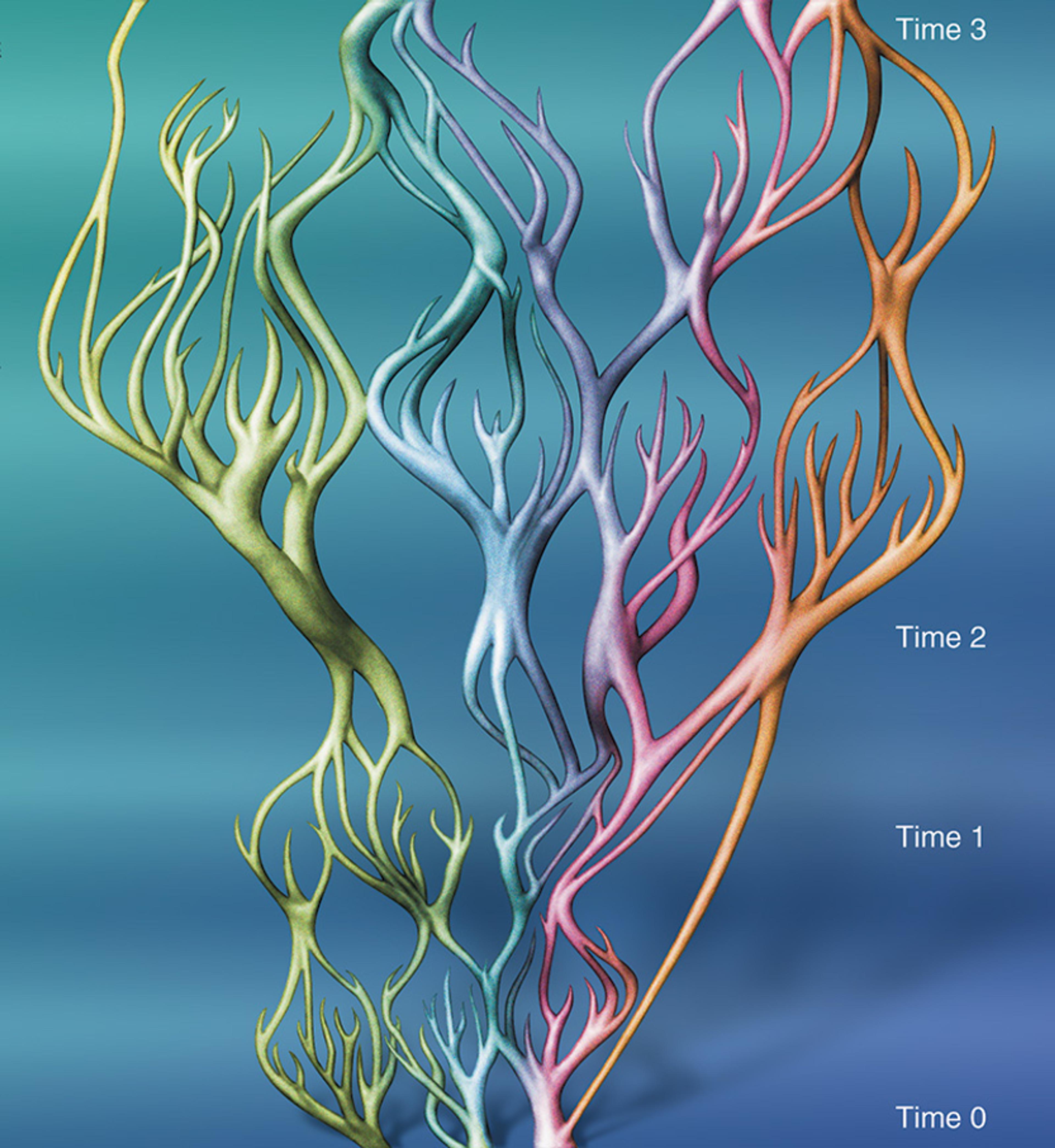
Veron used a mind experiment to develop his idea. Imagine that all the ocean currents stopped flowing. Fertilised coral eggs become larvae a quarter the size of a grain of rice. In the absence of currents, those larvae can’t swim very far, so they settle near their parents. When it comes time to spawn, coral eggs are fertilised by those close relatives living nearby. Over time, gene mutations accumulate in the local population through natural selection. These conditions create many isolated populations, or species.
Now imagine that the currents are vigorous. Coral larvae are swept far from their parents. When it comes time to spawn, they hybridise with distant relatives. The gene pool is mixed. Isolated populations are rare. Species blur together.
Veron argues that today’s corals are a product of Darwin’s classical natural selection when currents are slack, and of hybridisation when they are strong. Species separate and merge, and more so over long expanses of time and space. That’s why it was so hard for Veron to nail down what a ‘species’ is across an area as big as the Pacific Ocean.
‘The inverted commas,’ Veron wrote – referring to his usage in the paper ‘Corals: Pointing to a Different Evolution’ (2003) – ‘is because the “species” are not units, they are bits of a continua. What comprises a “bit” is arbitrary – a taxonomist’s opinion. Arbitrary, and in truth forever variable in space and time.’
Roving genes have been found in every branch of the tree of life where geneticists have looked
When Veron hypothesised reticulate evolution in corals, he had advantages that Haeckel and Darwin did not. He knew about what is called the Modern Synthesis of Evolution, which holds that, along with natural selection, factors such as genetic mutation and genetic drift play major roles in evolution. But Veron’s hypothesis came from observations and mind experiments, not genetic data.
Since Veron’s eureka moment, genetic tools have become more widespread and sophisticated. Does data support the hypothesis that species don’t just separate, they also merge? The answer is a resounding yes.
‘It’s not just rare freaks or accidents, it’s happening all the time. And in quite divergent species too,’ said Nielsen. Roving genes have been found in every branch of the tree of life where geneticists have looked. Today, the technical terms for the process of genes moving between populations are introgression or admixture.
Introgression occurs in plants such as maize and tomatoes. In mosquitoes, the entire genome except for the X chromosome can be swapped with other species. In a tropical genus of butterfly called Heliconius, gene jumping has been found to cause critical changes in the patterns of their colourful wings. Introgression has been documented in finches, in frogs, in rabbits, in wolves and coyotes, in swine, in yaks and cows, in brown bears and polar bears. And in us.
Nielsen and his colleagues found that Tibetans (and a few Han Chinese) carry a very beneficial gene called EPAS1. The protein EPAS1 gives a boost to haemoglobin, the molecule that ferries oxygen in our blood. EPAS1 makes high-altitude living easier. In 2014, the researchers discovered that the EPAS1 gene was also in the DNA of an extinct group of humans called Denisovans, known from bone fragments in Siberia and Tibet.
The prevailing hypothesis is this: ancient humans left Africa moving northward along temperate plains. When they encountered the Himalayas and their cold, high altitudes, it literally took their breath away. Those oxygen-poor conditions should have kept humans near the base of the mountains. But the ancient humans also encountered Denisovans and interbred with them, receiving the EPAS1 gene. Only those humans with the EPAS1 gene moved up the mountains, and their offspring also carried the EPAS1 gene, giving the ancestors of today’s Tibetans a critical advantage at higher altitudes.
‘I think that process of splitting up and merging back together again, and getting a bit of DNA from here to there, that’s happening all the time, in all of the tree of life,’ Nielsen said. ‘And it’s really changing how we’re thinking about it, that it really is a network of life, not a tree of life.’
If species don’t rest neatly on the ends of tree branches, what does that mean for Haeckel’s model of the evolutionary tree? Should we throw it out? I posed the question to Mark Kirkpatrick, evolutionary biologist at the University of Texas at Austin and co-author of the textbook Evolution (4th ed, 2017).
The Denisovan-human example is a good one, he said, standing and grabbing a piece of chalk to draw trees on the board in his office. When a biologist draws a tree today, it’s more precisely defined than Haeckel’s was. The lengths of the branches represent the number of differences in nucleotides, the building blocks of DNA, in a section of genetic code. A longer branch means more differences. Because differences take time to accumulate, a longer branch also means an older common ancestor.
One of the trees Kirkpatrick drew showed a shallow ‘V’ between Europeans and Tibetans, indicating that they are closely related. It showed a much deeper ‘V’ between Denisovans and the modern humans, indicating an older common ancestor. ‘In 99 per cent of the genome, that’s what the gene trees look like,’ Kirkpatrick said. ‘But in this gene called EPAS1, the gene tree looks like this because of a hybridisation event.’ In the second tree Kirkpatrick drew, the Tibetans shared a more recent common ancestor with the Denisovans.
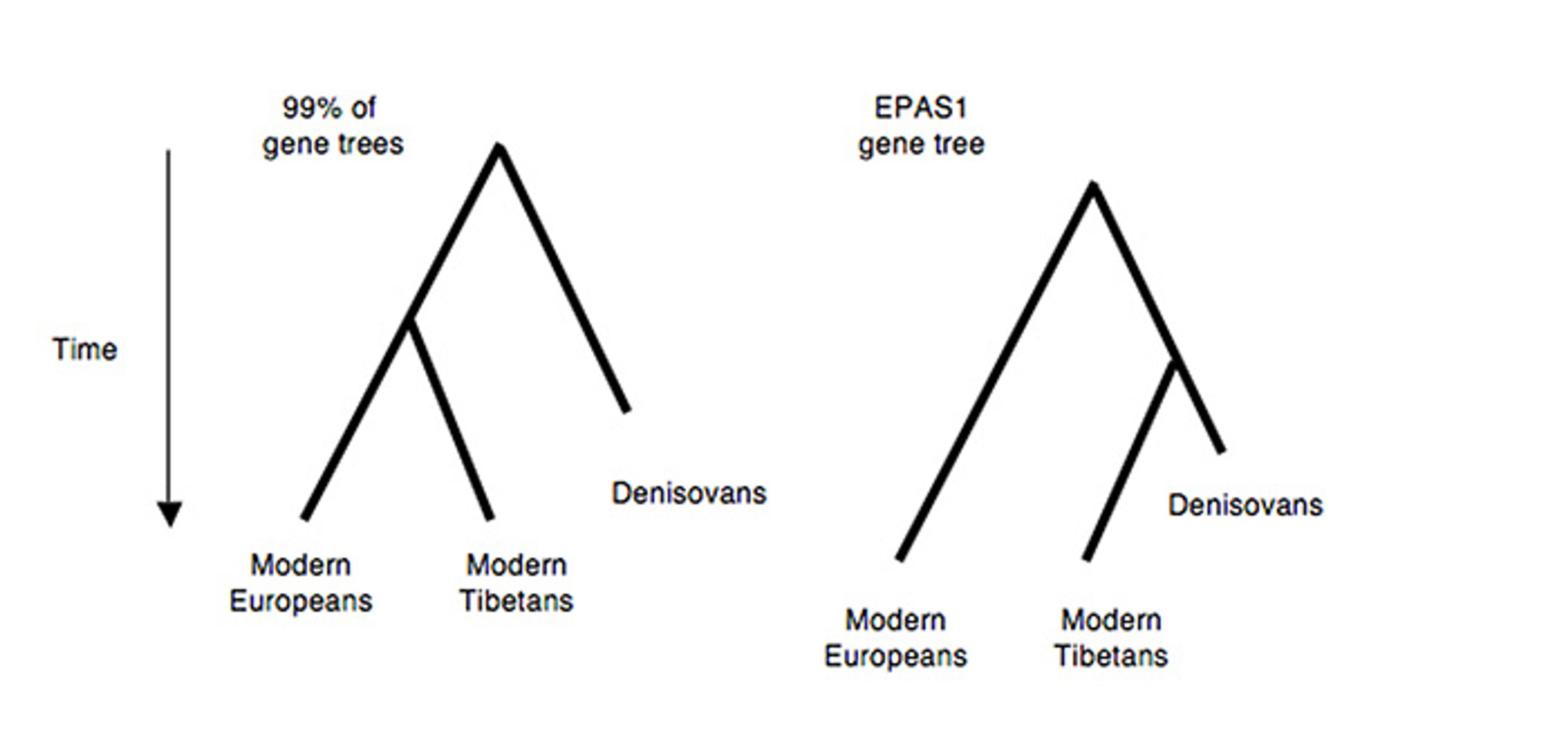
‘The reality is that a single tree to represent the entire species isn’t possible,’ Kirkpatrick told me. ‘Different pieces of DNA have different gene trees, and you just can’t represent all of that in a single diagram.’
Except, you can – if you accept some ambiguity. Later, on my computer, I redrew Kirkpatrick’s trees. And then I scooted them on top of each other. And I got something that looked, well, reticulated.

And that’s exactly where Kirkpatrick was headed. He showed me a paper written by the biologist Rongfeng Cui, now at Sun Yat-sen University in China, Molly Schumer at Stanford University, and colleagues.
Vernon had been looking at the forest every time he looked at an individual
‘So here are the fish. They are really pretty,’ Kirkpatrick said, pointing at a couple photographs. Just about the size of your finger, the fish live in sinuous streams along the east coast of Mexico. They are parrot-like in yellows and reds, some with racecar stripes and others mottled like granite. Some of the two-dozen species are called swordtails due to a flamboyant spike on the lower part of their tail. Others have a blunt tail, and are called platyfish.
For a long time, geneticists studying this large group puzzled over its evolutionary history, with different studies finding different relationships that seemed to conflict with each other.
In the paper Kirkpatrick showed me, Cui, Schumer and their colleagues analysed 160 different genes in 24 different species, and built trees for each gene. Then, they overlaid all 160 gene-trees on top of each other. The branches of the gene trees flowed together and apart. Where they separated, genes meandered from one species to another.
‘Look at that. They’re all fuzzy because they don’t agree because of hybridisation,’ Kirkpatrick said. ‘So that’s a visualisation of, I think, what [Veron] was struggling with.’
Later, Schumer, who co-authored the study, told me that, when she looked at the figure, the nearly vertical lines between two northern species always jumped out at her. ‘You have a big signal of things moving back and forth,’ she said. Across the entire group, statistical analysis suggested that introgression had occurred in as much as 30 per cent of these fishes’ genes.
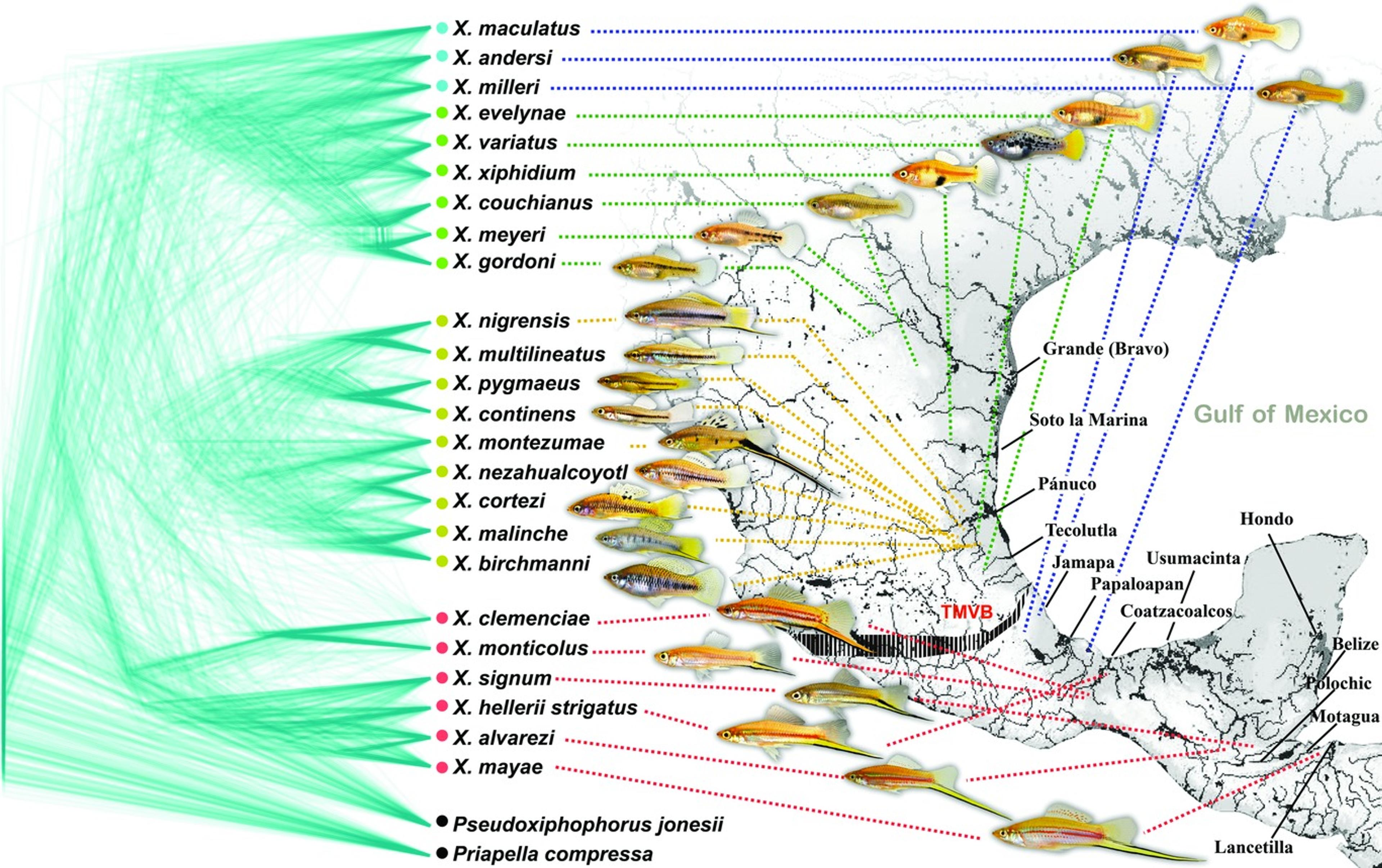
Staring at the figure, something clicked for me: every individual and every population contains many genes, each with its own evolutionary history and gene tree. All those gene trees will always result in disagreements, in fuzziness, in reticulation. Vernon had been looking at the forest every time he looked at an individual. That’s why he was so confused. I finally understood what I’d been trying to teach in southern California all those years ago.
Re-envisioning evolutionary trees as fuzzy networks raises another question: if genes rove so much, why do we see species at all? Why don’t species just lump together like so many paint pigments into a genomic version of brown?
Two floors down from Kirkpatrick’s lab at the University of Texas at Austin, I asked that question of the coral geneticist Misha Matz. He pointed to research from the first decade of the 20th century by the English biologist William Bateson who wondered why hybrids were often unhealthy or even sterile. Working with a large team of mostly women geneticists called the Newnham College Mendelians in Cambridge, Bateson showed that genes frequently didn’t simply code for one trait, but interact in more complex ways.
One of the overheads I showed my students at USC included a mating chart of mice, first worked out by Bateson’s colleague Florence Margaret Durham. She showed how multiple alleles (versions of a gene) work together to result in black, brown or white mouse coats. Bateson surmised that if multiple genes could work together to influence a trait, it was just as likely they could not work together too. Such genetic incompatibilities would compromise hybrid health.
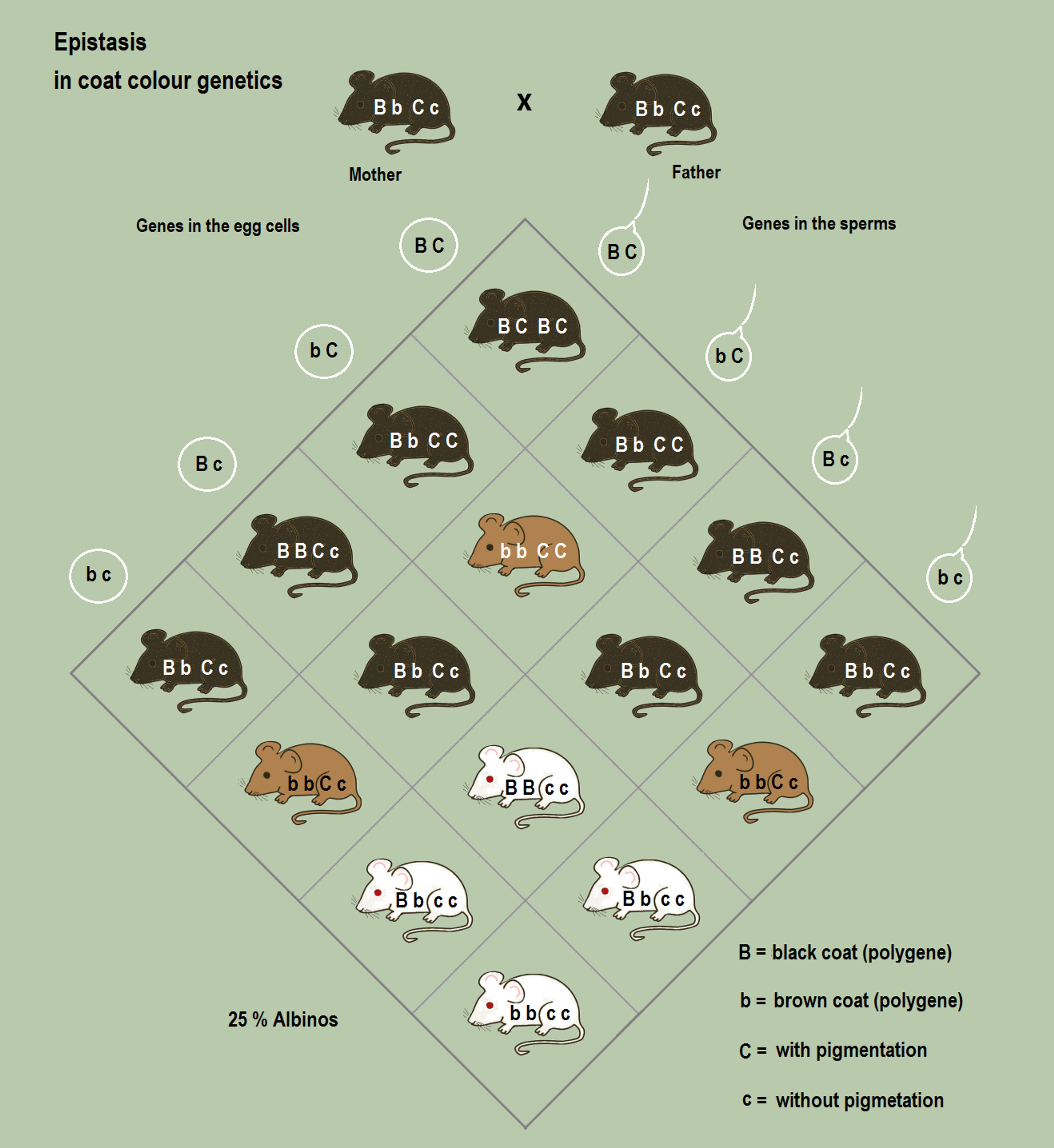
While the idea is easy enough to think about theoretically, it’s tough to find practically. That’s largely because the evidence – an unviable individual – won’t have much of a presence. But recently geneticists have begun to discover gene incompatibilities that look like they keep species from merging together.
In those swordtail fish that live in the streams in eastern Mexico, the hybrids of two closely related species develop a black cancer in their tails, the result of incompatible genes. In a plant abundant to North America called the monkey flower, which makes a pretty, tuba-shaped yellow flower, hybrid males don’t produce pollen because of gene incompatibilities. When two species of fruit flies produce hybrids, the incompatibility of two genes is lethal in all male offspring.
Time also plays a role, Matz said. When species of tropical hermit crabs that make their homes on coral reefs were brought together after 2 million years, they remained separate. There seems to be a window, different for different species, during which species can merge back together. ‘Things hybridise yet they do not lose their identity,’ Matz said. ‘Introgression is ongoing, but something keeps it from going all the way.’
Now, add climate change. As we continue to warm our planet at unprecedented rates, one of the greatest questions facing geneticists is this: can evolution keep up? And can introgression help? It could be that, as environments change, species ‘pick up genes from other species in other environments’, Nielsen told me.
One driver could be shifting habitats. As the planet warms, populations drift to higher altitudes or northern latitudes, and they encounter new species with which to hybridise. For example, polar bears and brown bears are running into each other more frequently. In 2006, hunters in Canada shot a white bear with brown rings around its eyes and extra-long claws. Genetic analysis showed that it was a hybrid, with a polar bear mother and a brown bear father. Ultimately, ‘bolar’ bears (or ‘pown’ bears?) could become the norm.
The situation might go the other way too, of course, with the climate crisis exacerbating genetic incompatibilities. Cheyenne Payne, a postgraduate in Schumer’s lab at Stanford, studies hybrids of those Mexican swordtail fish. She found that hybrids of these two species didn’t fare well in water that was as hot or as cool as the temperatures at which their parents live. Digging into the fishes’ genes, she discovered two that were especially temperature-sensitive.
Both parents increase expression of those two genes in warmer water and decrease it in cooler water. But the hybrids are unable to modulate these genes in different temperatures. Whether this is an example of a temperature-dependent incompatibility requires further testing. Still, it shows how the climate crisis might worsen genetic incompatibilities.
Imagine millions of corals, each one a genetic innovation factory, crowdsourcing solutions to survival
When it comes to coral, the climate crisis is especially critical. Corals are solar-powered animals, fuelled by a symbiosis with algae that live tattoo-like in their tissues. The algae supply as much as 90 per cent of the sugar that they make through Sun-driven photosynthesis to the coral.
But when ocean temperatures rise by a couple of degrees for a few weeks, the algae abandon the coral, leaving them bone white, or bleached, and devoid of their energy source. Ocean temperatures have already increased more than 1ºC. Layer marine heatwaves on top of that, and temperatures frequently reach bleaching thresholds. Mass bleaching was largely unknown before the 1980s. Now, nearly every reef on our planet has experienced it. Predictions are that 99 per cent of all stony coral will die by the end of the century, if the climate crisis is not mitigated.
Moored as they are to the seafloor and reliant on a slow-growing limestone skeleton, corals can’t easily escape warming temperatures like four-legged polar and brown bears can. But what corals lack in mobility, they might compensate for in genetic diversity. There are more than 800 ‘species’ of corals, according to Veron’s most recent count. Theoretically, because they all have the same number of chromosomes, they can hybridise.
The big question is, can the exchange of genetic information help them adapt to the climate crisis, Matz said. And would splitting into more species with smaller populations actually hurt coral by leaving each group without sufficient genetic diversity to adapt, yet again? Or, on the other hand, are coral more like ‘slightly different working groups in slightly different environments working on the common solution to the same problem?’ As he said that, I imagined millions of corals, each one a genetic innovation factory, collectively crowdsourcing solutions to survival.
Scientists have already started to see some shifts. Off the island of Hawai‘i, the coral bleaching threshold has increased by more than 2ºC. Anecdotally, Matz told me that corals at his field site in Australia now tolerate several degrees higher temperatures than a decade ago. Similar observations have been published from Southeast Asia. Although no gene for ‘thermotolerance’ has been discovered – and experiments suggest no single gene exists – such observations could mean that natural selection is already acting on coral.
If some corals do come up with genetic solutions to warmer seas, could their genes spread to other species the way that EPAS1 helped some humans use more oxygen at higher altitudes?
‘Maybe hybridisation would mix things together. Or maybe not,’ Matz told me. ‘But that’s the question. We don’t know which is going on.’
What we do know is that the tree of life is much more complicated and twisty than we believed it to be just a generation ago.
I imagine having the chance to speak to my students again. I would place Haeckel’s tree on the screen and tell them that it is an anachronism. I would explain how species are not isolated on the ends of branches, that there are many more interconnections and opportunities for innovation. I would say that only by recognising its inherent fuzziness can we begin to understand evolution more clearly.



